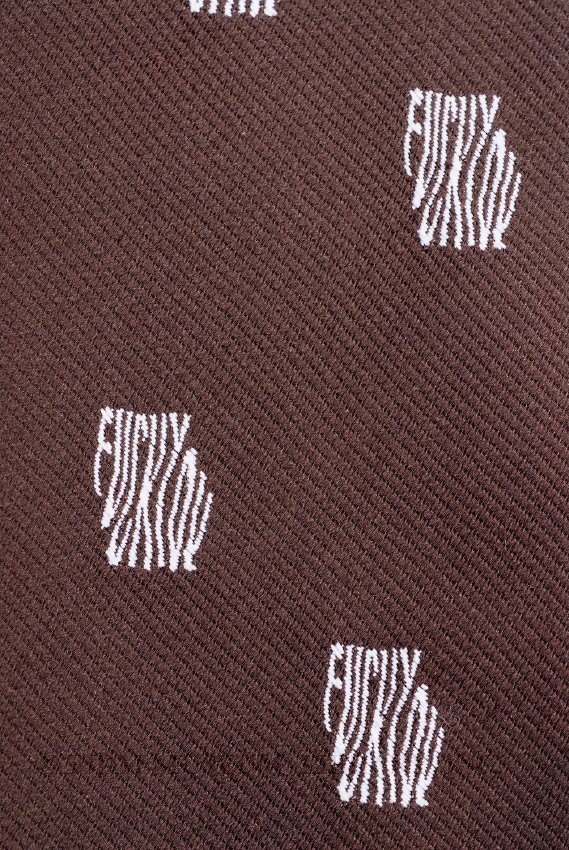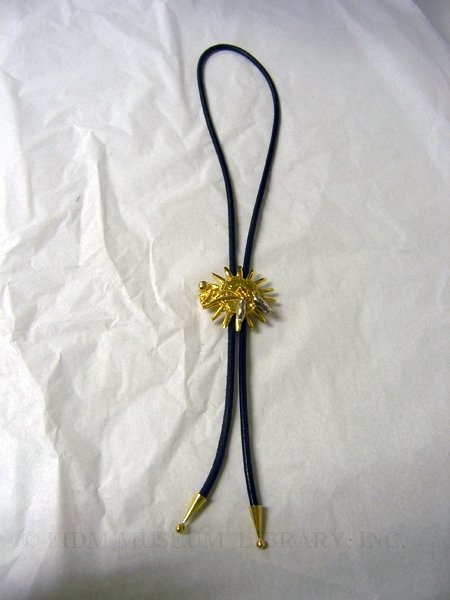Neck ties
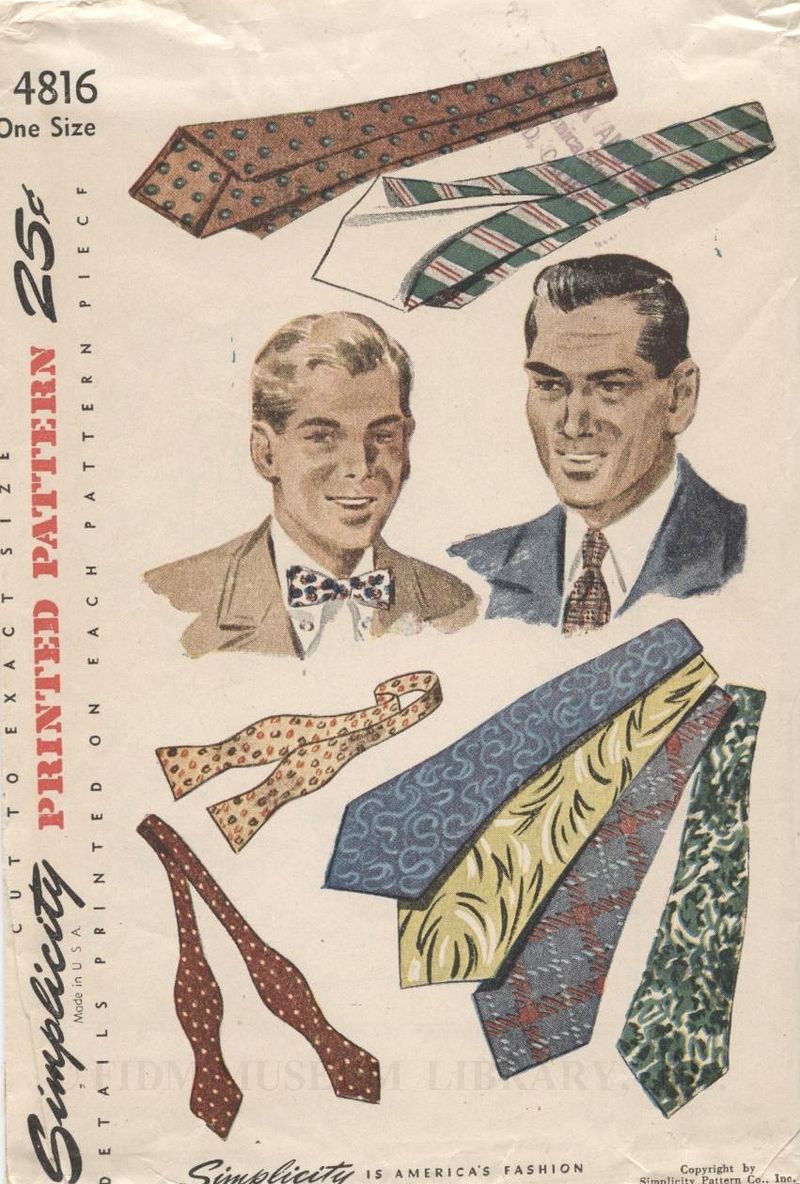 Neck and bow tie pattern
Neck and bow tie pattern
Simplicity
1945-50
Gift of Helen McKenna
2006.864.3
The elongated, relatively slim silhouette of the modern neck tie emerged in the mid-nineteenth century. Unlike its predecessor, the cravat, the neck tie didn't require careful starching, arranging and continual readjustment. This 1818 image from a satirical essay called Neckclothitania; or Tietania mocks the various and complicated methods of tying the neck cloth or cravat. It was much easier to knot a neck tie in place, securely tucking the ends inside the waistcoat and jacket. The simplicity and speed with which a neck tie could be donned was a boon to men who entered the office-based workforce during the Industrial Revolution. The necktie continued to gain favor as stiff, standing collars were gradually replaced by softer collars with turn-down points. Another form of neck wear, the bow tie, remained popular into the twentieth century as demonstrated by the Simplicity pattern pictured above. Increasingly, however, the bow tie was associated with formal wear and not everyday business dress.
In general, professional men of the late nineteenth and early twentieth century dressed in dark-colored business suits. Neck ties offered a small canvas on which to display a touch of personality, such as school and club affiliations. For those in the know, specific color combinations and patterns (often stripes), indicated where an individual had attended school and the social club to which he belonged. In the twentieth century, the palette of neck ties broadened, with mass production allowing for a tremendous array of color, textile and pattern.
With the shape and length of the neck tie relatively fixed, ties are dated by subtle variations in width, length or patterning. The years after World War II witnessed a proliferation of vividly flamboyant, colorful neck ties with a strong emphasis on naturalistic themes. The paired gun and quail pattern on this c. 1947 neck tie probably indicates a favored hobby of the wearer.
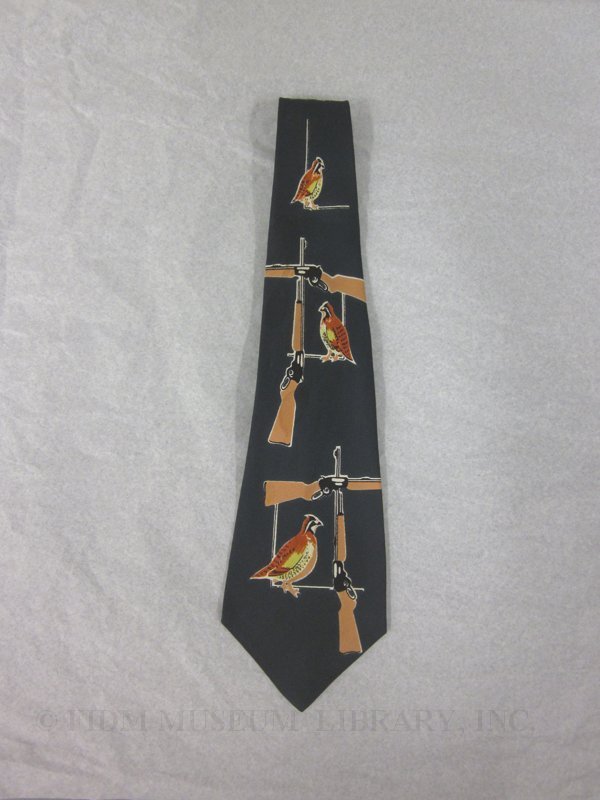
Neck tie
Silk
c. 1947
Gift of Steven Porterfield
2007.897.27
In visual culture, neck ties typically represent conformity and a willingness to adhere to social norms. This early 1970s tie belies this association with its subtle woven pattern. From a distance, words melt into a curvilinear decorative motif. Up close, however, the confrontational language is unmistakable. It's a fascinating object that succinctly represents the anti-establishment mood of the late 1960s and early 1970s.
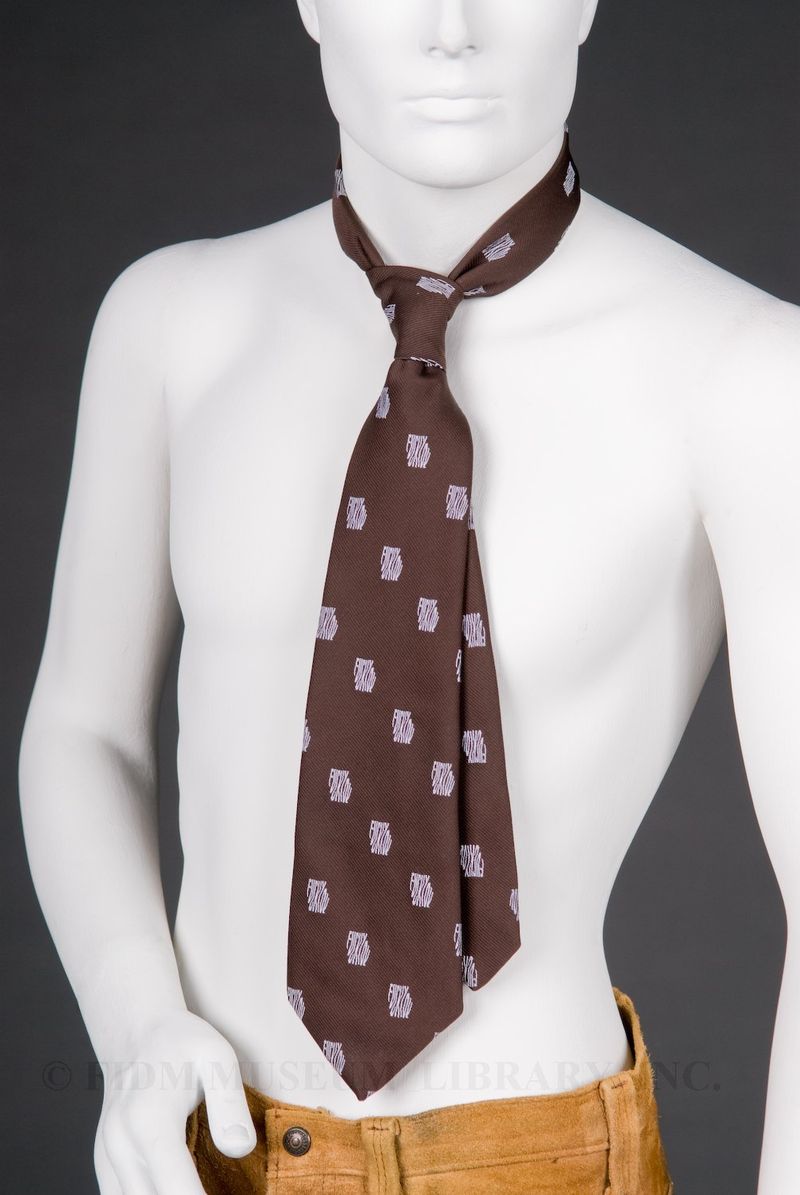 Neck tie
Neck tie
1970-72
Museum Purchase
2004.5.66
This neck tie was a FIDM Museum purchase, so we don't know anything about the context in which it was worn. Wonder if the owner managed to wear it to work without repercussions?!? Hope you can make out the wording, as it's an expletive I'd rather not write on this blog!
Our final tie isn't a neck tie proper, but a variation: the bolo or bola tie. Closely associated with the American Southwest, the bolo tie is a length of leather or ribbon embellished with a sliding decorative element. The origins of the bolo tie are uncertain, though the slide mechanism was patented in 1959 by Victor Cedarstaff, the supposed inventor. Though probably apocryphal, the story goes that Cedarstaff's cowboy hat was blown off in the wind during a horseback ride in the late 1940s. Cedarstaff replaced the hat on his head, but didn't want to loose the decorative hatband if his hat blew off again. He placed the hatband around his neck, and the bolo tie was born. Bolo ties have enjoyed sporadic bouts of popularity, particularly in the 1980s and 1990s. In some states the bolo tie is a permanent fixture; it is the offical tie of New Mexico, Arizona and Texas. This version by Gianni Versace dates from S/S 1993 and features a stylized flower or sun on the slider. Versace's bolo tie demonstrates his interest in the American Southwest, an interest also evidenced by our Versace fringed leather vest.
Bolo tie
Gianni Versace
Spring/Summer 1993
Gift of Joan Worth in memory of Marvin Worth
V2006.890.9
